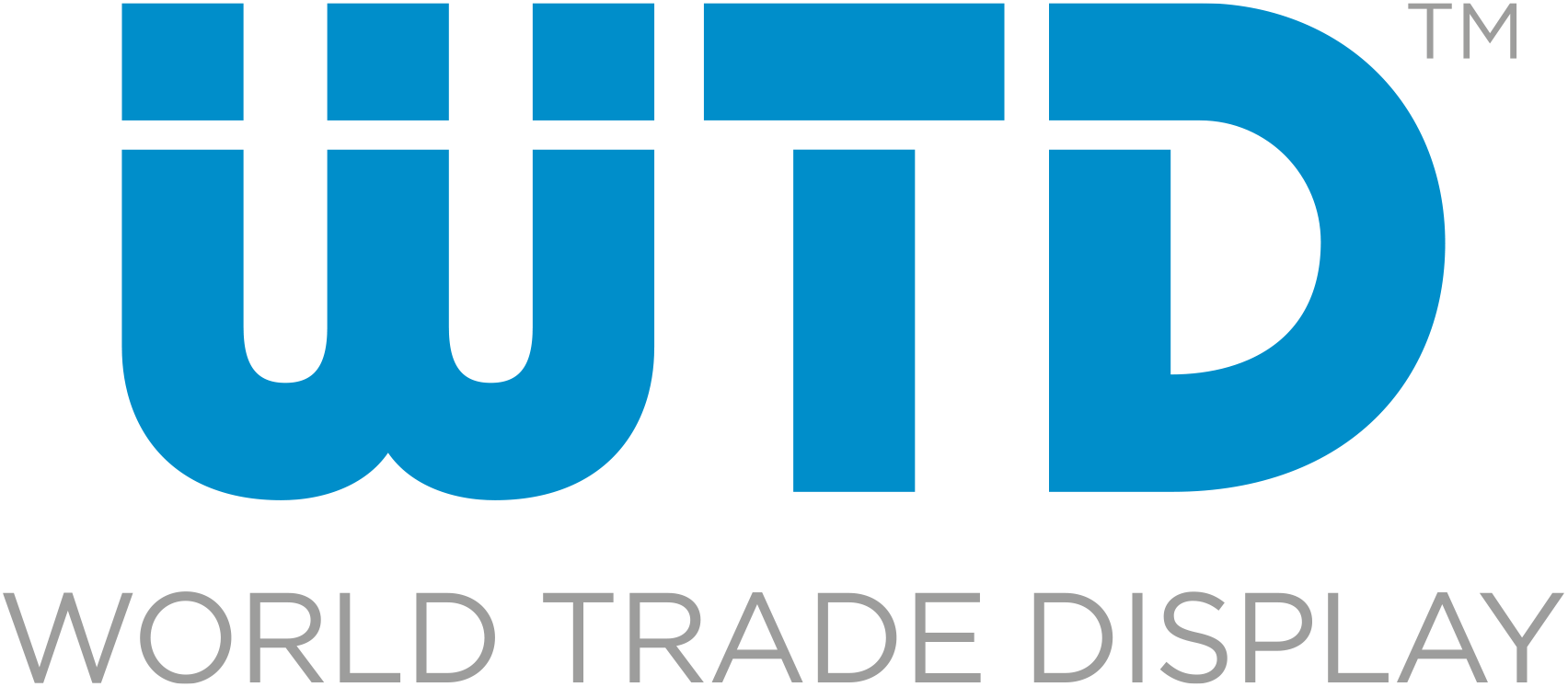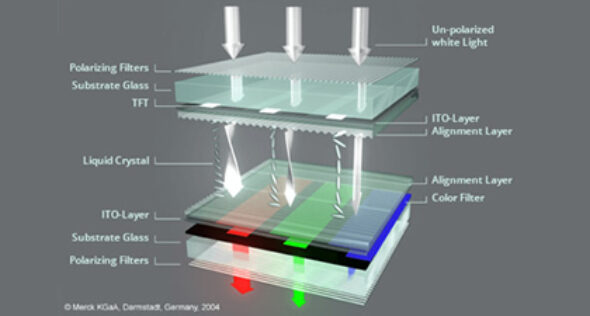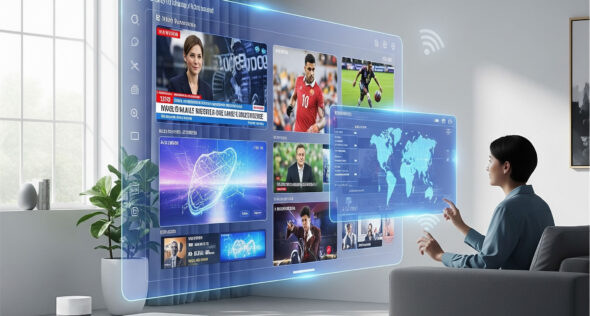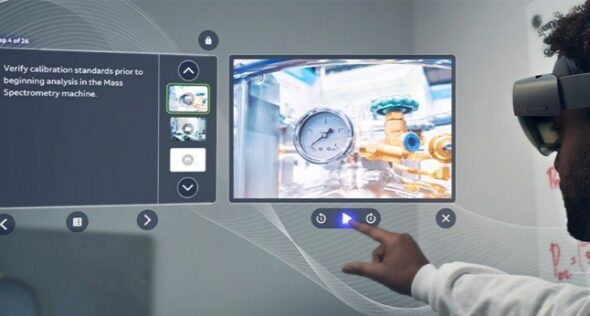A new generation of highly flexible and durable displays, made with special polymers, is opening the door to new ways of using smartphones, monitors, and wearable devices. Everyone knows the fear of seeing a phone screen crack after a fall. Today’s displays are rigid and fragile, but this problem may soon be solved. A research team at Stanford University, led by Zhenan Bao, has developed a display that is extremely bright and at the same time elastic: it can be stretched and deformed like a rubber band without breaking.
The material that makes the difference
The key to this technology is a newly engineered soft polymer that emits light. Unlike traditional materials, which are rigid and prone to damage, this polymer maintains brightness even when stretched to twice its length. Previous attempts to make display materials more flexible involved mixing them with rubber, but this reduced electrical conductivity and required high voltages to achieve acceptable brightness. The breakthrough came in 2019 with the discovery of Super Yellow, an elastic polymer capable of emitting yellow light. When mixed with polyurethane, Super Yellow forms nanostructures that connect like a net: this allows current to flow freely and ensures high brightness. Using this approach, the team then created versions able to emit red, green, and blue light, enabling full-spectrum color reproduction.
A 7-layer structure
The display is built from seven stacked layers:
- two protective outer layers
- two conductive layers
- three central layers that emit color
This architecture makes the display flexible, resistant, and bright.
Future applications
The technology is still in an early phase, but the potential is significant:
- Practically unbreakable screens, ideal for smartphones and portable devices
- Wearable displays, that can be wrapped around the body
- Flexible 3D screens, capable of showing maps and immersive visual content
- Displays that adapt to curved or irregular surfaces
In short: the screen of the future will not break and will take the shape you need.
(Video demonstration):






